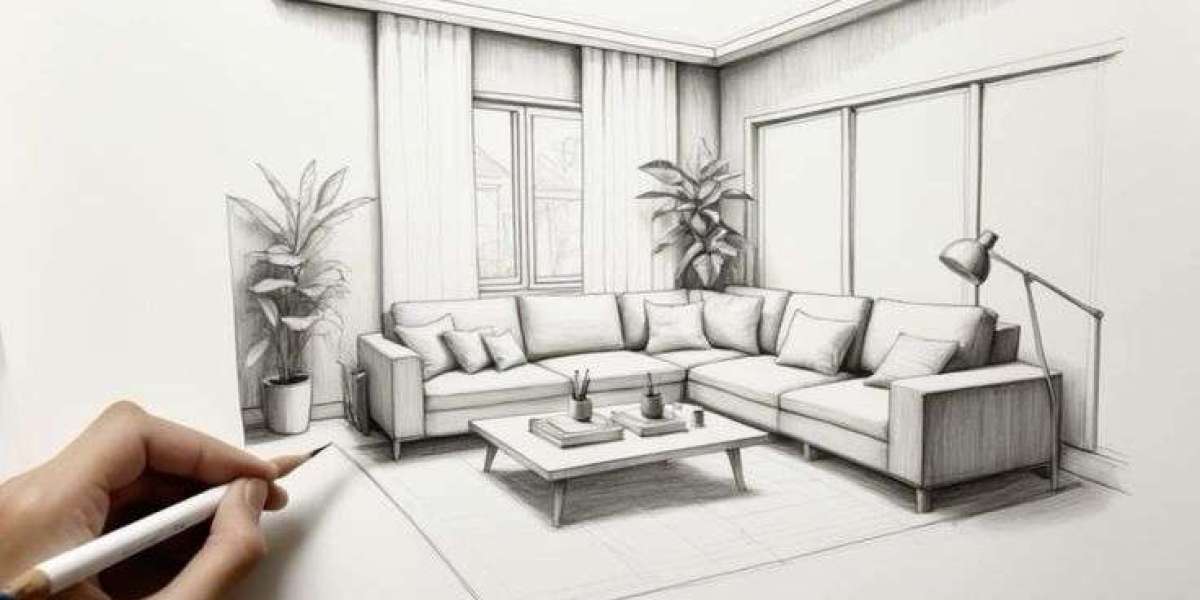Interior design is no longer just about decorating homes with beautiful furniture and colors. It has become a full-fledged profession that combines creativity, technical knowledge, and practical skills to transform spaces into functional and aesthetically pleasing environments. With the growing demand for stylish interiors in residential, commercial, and retail spaces, interior designing has emerged as a rewarding career choice. If you are considering pursuing an interior designing course, it is important to know what to expect before you enroll.
At PaperLoft Institute, we understand that students and working professionals alike often seek clarity before investing time and effort into such a career-defining program. This blog will walk you through everything you need to know about interior designing courses so you can make an informed decision.
What is Interior Designing?
Interior designing is the art and science of planning, designing, and executing interior spaces that are both functional and visually appealing. Unlike general decoration, interior design requires an understanding of architecture, ergonomics, materials, lighting, spatial planning, and even psychology of space usage. A trained interior designer does more than select curtains and wall colors—they conceptualize, plan, and oversee the complete transformation of a space.
Why Choose Interior Designing as a Career?
The demand for professional interior designers has risen sharply in India and worldwide. Some of the top reasons to pursue this career include:
Growing Industry Demand: With urbanization and lifestyle changes, people are investing more in thoughtfully designed homes and workspaces.
Creative Fulfillment: If you enjoy working with colors, textures, and layouts, this career offers endless creative possibilities.
Diverse Opportunities: Interior designers can work on homes, offices, hotels, retail spaces, and even set design for films and events.
High Earning Potential: Experienced designers and those running their own studios can build lucrative careers.
Flexibility: Many designers choose freelance or consultancy work, making it ideal for professionals who want independence.
Types of Interior Designing Courses
Before enrolling, it is important to understand the different types of courses available. At PaperLoft Institute, for example, we have tailored programs designed to suit beginners as well as busy professionals. Broadly, interior designing courses can be categorized as:
Diploma in Interior Designing
Duration: 6 months to 1 year
Focus: Fundamentals of design, color theory, materials, CAD software, and practical assignments.
Ideal for: Students who want to quickly enter the field or professionals seeking a career shift.
Advanced Diploma/Professional Certification
Duration: 1–2 years
Focus: In-depth training, including residential and commercial design, project management, sustainable design, and advanced software skills.
Ideal for: Students serious about building a long-term career.
Short-Term Specialized Courses
Duration: 3–6 months
Focus: Specific skills like lighting design, furniture design, 3D visualization, or sustainable interiors.
Ideal for: Professionals who want to upskill without committing to a full-time program.
What Will You Learn in an Interior Designing Course?
A comprehensive course at PaperLoft Institute covers both creative and technical aspects. Students can expect to learn:
Design Principles: Balance, rhythm, contrast, and proportion.
Space Planning: Efficiently organizing layouts for homes, offices, and commercial spaces.
Color Theory: Understanding the psychology and harmony of colors.
Materials and Textures: Knowledge of fabrics, woods, tiles, paints, and other materials.
Lighting Design: How to use natural and artificial light effectively.
CAD and 3D Software: Tools like AutoCAD, SketchUp, and 3ds Max to create professional layouts and visualizations.
Furniture and Fixture Design: Basics of custom furniture and ergonomics.
Sustainability: Eco-friendly and cost-effective design approaches.
Project Management: Budgeting, client communication, and timelines.
Who Can Enroll?
One of the best aspects of interior designing courses is their accessibility. You don’t always need an architectural background to start. At PaperLoft Institute, we welcome:
Students fresh out of school or college who are passionate about design.
Working professionals seeking a career change.
Homemakers or part-time professionals who want flexible learning options.
Entrepreneurs aiming to start their own interior design business.
If you have creativity, an eye for detail, and the willingness to learn, you can thrive in this field.
Career Opportunities After an Interior Designing Course
A diploma or professional certification can open several doors for you. Common career paths include:
Residential Interior Designer
Commercial/Office Space Designer
Retail & Hospitality Designer (restaurants, hotels, showrooms)
Furniture Designer
Lighting Consultant
Interior Stylist or Decorator
Freelance Designer or Studio Owner
At PaperLoft Institute, we also provide industry exposure, networking opportunities, and career guidance to help students transition smoothly into the professional world.
Things to Consider Before Enrolling
Before you take the leap, keep these factors in mind:
Course Curriculum: Ensure the program covers both design fundamentals and modern software skills.
Faculty Expertise: Learn from industry professionals who can share real-world insights.
Flexibility: If you are a working professional, choose a program that allows weekend or online classes.
Practical Exposure: Hands-on projects, workshops, and internships are crucial.
Institute Reputation: Opt for a trusted institute like PaperLoft, known for quality training and career support.
Why PaperLoft Institute?
At PaperLoft Institute in Bangalore, we specialize in diploma and professional courses tailored for students and busy professionals. Our programs are designed to provide:
Flexible Learning Modes – weekend and part-time options.
Practical Training – real-world projects and workshops.
Experienced Faculty – mentors with industry backgrounds.
Career Guidance – portfolio building and job placement assistance.
We understand that every learner’s journey is different, and we make it possible for you to pursue your passion for interior design without putting your career or personal life on hold.
Final Thoughts
Enrolling in an interior designing course in Bangalore is more than just learning how to beautify spaces—it’s about building a career where creativity meets functionality. With the right training, exposure, and mentorship, you can establish yourself in a field that is both personally fulfilling and financially rewarding.
If you are ready to take the first step, explore the programs at PaperLoft Institute and begin your journey toward becoming a professional interior designer.



